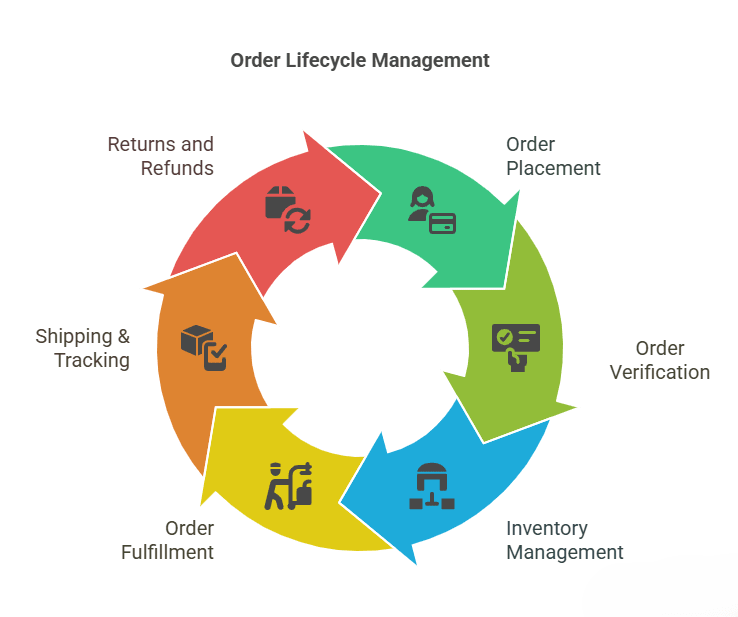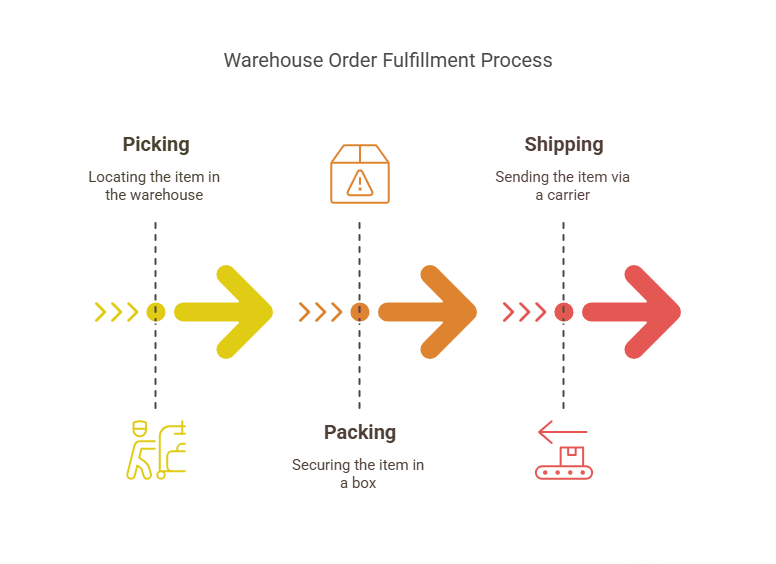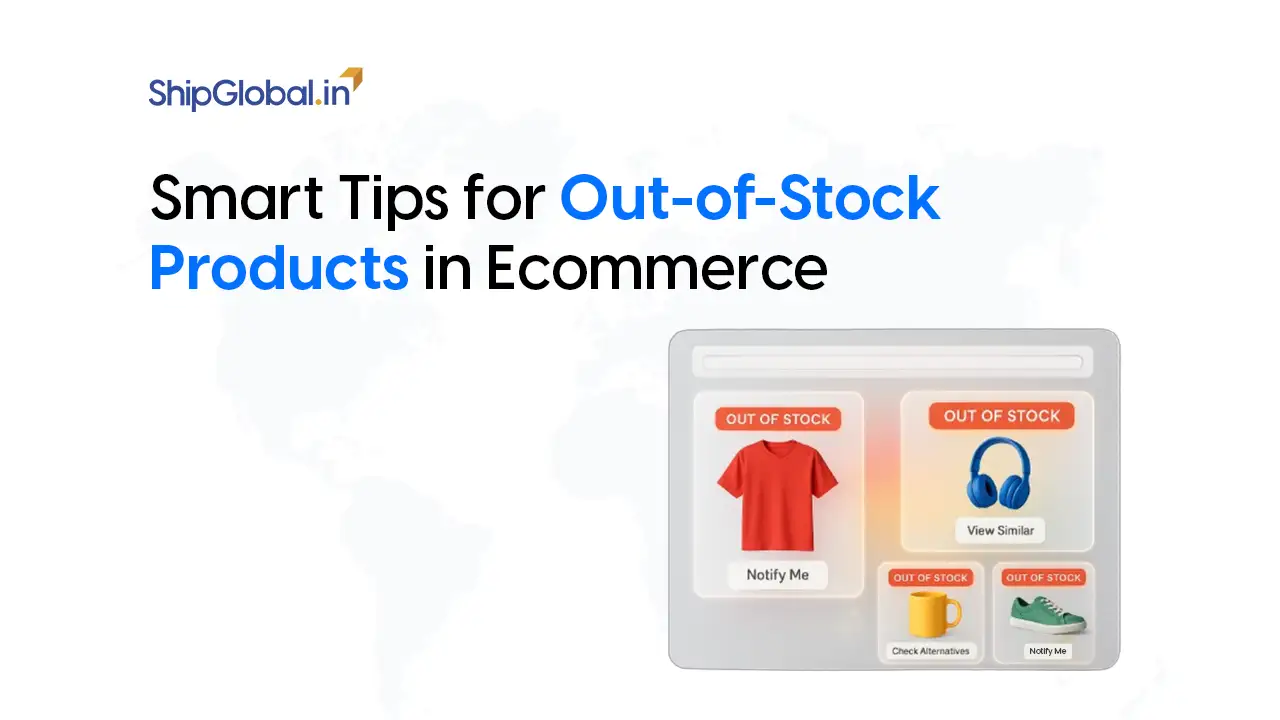Let’s say you’re shopping online for a pair of sneakers. You click “Buy Now,” get a confirmation email, and the shoes are at your doorstep two days later. Ever wondered what goes on behind the scenes to make that happen so smoothly?
That’s where the Order Management System (OMS) comes into play. In this guide, we’re breaking down every piece of the puzzle – from what an OMS is, to how businesses manage inventory, fulfill orders, and handle returns. Whether you’re a curious shopper or someone in business trying to make sense of it all, you’ll walk away with a full understanding.
What is an Order Management System (OMS)
At its core, an Order Management System (OMS) is like the command center for your business operation. It manages the entire order lifecycle, which means everything from the moment a customer places an order until that order is delivered – or even returned.
Think of it as the digital brain that connects:
- Your inventory (what’s in stock and where)
- Your sales channels (website, app., Physical store, etc.)
- Your fulfillment options (warehouse, third party logistics, in-store pickup)
- And your customer service (updates, refunds, and returns)
An OMS keeps all these parts talking to each other in real time, helping businesses operate efficiently and customers stay happy.
Breaking Down the Order Lifecycle
To understand the value of an OMS, you’ve got to understand what the order lifecycle looks like:
- Order Placement
This is where it all begins. A customer places an order on a website, app, or even by calling customer service. This order is captured and sent into the system.
- Order Verification
The system checks: Is this product in stock? Is the payment legit? Can we ship to the customer’s location? Once verified, it’s greenlit for fulfillment.
- Inventory Management
Here’s where things get real. An effective OMS will sync across all warehouses, stores, and suppliers to give a real-time view of inventory management. It prevents overselling and makes sure stock is updated instantly as orders come in or get returned.
- Order Fulfillment
Once verified and matched with inventory, the order moves into order fulfillment – basically “the pick and ship” phase. The OMS figures out the best place to ship from.
- Shipping & tracking
The product is on its way! Tracking numbers are shared with the customer, and real-time updates are available through the system.
- Returns and Refunds
Not everything is a perfect fit. A good OMS handles returns and refunds seamlessly, generating return labels, updating inventory, and triggering refunds automatically.

What is Order Fulfillment (and Why Does it Matter?)
Order Fulfillment is the process of actually getting the product to the customer. It includes:
- Picking: Finding the item in a warehouse.
- Packing: Getting it safely boxed up.
- Shipping: Sending it through a carrier (like FedEx, UPS, etc.)
This is important because speed and accuracy matter. Customers want fast delivery, but also the right product, undamaged and on time.
A good OMS optimizes the entire fulfillment flow, sometimes even using automation, robots, AI, or software, to reduce errors and speed things up.

Enter Omnichannel Fulfillment: Meeting Customers Wherever They Are
Now here’s where it gets exciting. Omnichannel fulfillment is when businesses fulfill orders from multiple sources, not just a central warehouse.
Imagine this:
- You order online, but the product is shipped from a local store nearby.
- Or, you buy online and pick it up curbside that same day.
- Or, you return an online purchase to a physical store.
This level of flexibility is what modern customers expect. And it’s only possible when your OMS can “see” across all your inventory sources – online, in stores, third-party warehouses, etc.
Key Benefits of Omnichannel Fulfillment:
- Faster deliveries
- Lower shipping costs
- Higher inventory accuracy
- Better customer experience
System Integrations: The OMS Doesn’t Work Alone
One of the most powerful aspects of a well-designed Order Management System is its ability to integrate with other tools and platforms your business relies on daily
An OMS acts as the middleware that connects and coordinates:
eCommerce Platforms
Your website or online store (Shopify, WooCommerce, Magento, BigCommerce) is where customers interact with your brand. These platforms send other data to the OMS, which then manages inventory checks, fulfillment, and shipping.
Example: If you sell on Shopify and Amazon, your OMS consolidates orders from both platforms, avoiding overselling and enabling a unified inventory view.
Point of Sale (POS) Systems
Brick-and-mortar stores still play a crucial role in omnichannel commerce. An integrated POS system lets store staff see real-time inventory, create in-store pickup orders, and even start returns or exchanges for online orders.
Example: If a customer returns an item online at a physical store, the POS and OMS together can update the inventory in real-time, process the refund, and notify the customer – all automatically.
Shipping and Logistics Providers
Once an order is ready to go, your OMS must integrate with shipping carriers like FedEx, UPS, DHL, and ShipGlobal to generate tracking numbers, labels, and estimated delivery times.
Example: The OMS can auto-select the cheapest or fastest carrier based on business rules, saving both time and shipping costs.
Accounting and ERP Systems
Order data eventually needs to flow into your accounting software (like QuickBooks or Xero) or enterprise resource planning (ERP) system. This ensures inventory costs, revenues, returns, and taxes are recorded correctly.
Example: If a return is processed, the OMS will communicate with your ERP to adjust financial records and restock inventory.
OMS for Different Business Models
Different businesses have different order management needs. Let’s look at how an OMS adapts based on the business model:
1. D2C (Direct-to-Consumer)
For brands that sell directly through their channels, the focus is on speed, customer communication, and brand experience. D2C brands often use an OMS to automate fulfillment, reduce delivery times, and simplify returns.
2. B2B (Business-to-Business)
B2B transactions are more complex—they may involve bulk orders, negotiated pricing, purchase orders, credit terms, and staged deliveries. An OMS built for B2B must support these features while still automating processes to reduce manual errors.
3. Marketplace Sellers
Selling on platforms like Amazon, Flipkart, or Etsy? A strong OMS gives you a single dashboard to manage orders, returns, and inventory across multiple marketplaces, reducing the risk of miscommunication or over-promising stock.
4. Multi-brand Retailers or Franchises
Large retailers may operate several sub-brands or franchise outlets. The OMS must support hierarchical inventory views, store-level order routing, and individual location reporting, while still maintaining centralized control.
Cost of Not Having an OMS
Still wondering if investing in an OMS is worth it? Let’s flip the question. What’s the cost of not having one?
Without a proper OMS:
- You risk overselling or stockouts because your inventory isn’t updated in real time.
- Orders may fall through the cracks, especially during high volume sales or promotional events.
- Your team spends hours on manual tasks, like copying data between systems, handling fulfillment errors, or manually issuing refunds.
- Returns become nightmares, involving several departments and delays that frustrate customers.
- You have limited visibility into where bottlenecks are happening, and can’t optimize what you can’t see.
In short: the longer you go without an OMS, the more operational debt you build up—and that gets expensive fast.
Automation: The Secret Ingredient to Order Management
Let’s face it – manually tracking every order, every return, and every stock update just isn’t realistic anymore. That’s why automation is a game-changer.
With automation, your OMS can:
- Route orders to the nearest fulfillment center.
- Send order confirmations and shipping updates automatically.
- Trigger restocking when inventory gets low.
- Flag suspicious or fraudulent orders.
This doesn’t just save time – it also cuts down on human error, boosts efficiency, and keeps your team focused on more important work.
Why Customer Experience is Everything
All of these logistics – order tracking, fast shipping, flexible returns – lead to one major outcome: a great customer experience.
And here’s why that matters:
- The majority of customers are willing to pay more for a better experience.
- One bad experience can drive customers away for good.
- Repeat customers are more likely to spend and refer others.
When your OMS is working well, customers feel like your brand “has it together.” Orders arrive on time, they get updates along the way, and returns are handled without a hassle. That’s the kind of experience that earns trust and repeat business.
Handling Returns and Refunds Gracefully
No one wants returns. But they’re a natural part of doing business, especially online. A solid OMS helps you turn this potential pain point into a positive experience.
Here’s how:
- Customers can initiate returns online with a few clicks.
- The OMS updates your inventory as soon as the return is scanned.
- Refunds are processed quickly, building customer trust.
- The system tracks return patterns, helping your business reduce future issues (like wrong sizes or defective items).
Returns don’t have to be a nightmare. With the right tools, they become part of a smooth, trustworthy customer experience.
Final Thoughts: Why an OMS Is Non-Negotiable Today
If you’re still managing orders manually or juggling spreadsheets, it’s time to reconsider. A modern order management system isn’t a “nice-to-have” anymore—it’s essential.
Here’s why:
- It keeps your order lifecycle running like a well-oiled machine.
- It gives you real-time control over inventory management.
- It enables fast, accurate order fulfillment.
- It powers omnichannel fulfillment, meeting customers wherever they are.
- It automates the repetitive stuff so your team can focus on growth.
- It dramatically improves customer experience, from start to finish.
- And yes—it even makes returns and refunds a breeze.
At the end of the day, the businesses that win are the ones that deliver—not just products, but outstanding experiences.
FAQs
An Order Management System (OMS) is a software platform that helps businesses manage the entire order lifecycle—from when a customer places an order, through inventory management, order fulfillment, shipping, and even returns and refunds. It connects multiple sales channels and back-end systems, making operations smoother and more efficient.
A robust OMS ensures that customers receive their orders accurately, on time, and with real-time tracking updates. It also streamlines processes like exchanges, returns and refunds, and order modifications. All of this contributes to a smoother, faster, and more reliable customer experience—a major differentiator in competitive markets.
The Order lifecycle encompasses all stages an order undergoes, including order placement, payment processing, inventory allocation, fulfillment, shipping, and post-purchase services like returns. An OMS meticulously manages each phase, ensuring seamless transitions and real-time tracking. This holistic approach reduces operational inefficiencies and enhances overall service quality.
Absolutely. Omnichannel fulfillment refers to the ability to process and deliver orders across multiple sales channels, be it online stores, physical retail outlets, or third-party marketplaces. An OMS synchronizes inventory and order data across all platforms, enabling businesses to offer flexible fulfillment options. Such as buy online, pick up in-store (BOPIS) or ship-from-store, thereby meeting diverse customer preferences.









